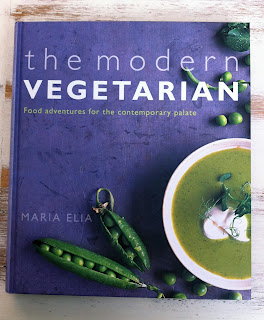From The Conscious
Cook, Tal Ronnen, William Morrow, 2009.
When I decided to make this corn chowder I got out the
cashews to make cashew cream but, to my dismay, all of the nuts seemed to have
small white worms in them. They went into the bin. I had some ricotta in the refrigerator so
decided that I would puree this and use it instead. I know it would not now be
a vegan dish but I am not vegan so I felt it did not matter.
The first stage of the dish was to add chopped onions,
carrots, celery and a red capsicum to the frying pan. I also added a chipotle
chilli. This mix was sautéed for about 10 minutes. Stock was added together
with diced potatoes and a couple of thyme sprigs. This was all simmered for
about 20 minutes until the potatoes were tender.
I now took a tablespoon and flattened some of the potatoes
against the side of the pan. This thickened the soup a little. Now the corn was
added and the pureed ricotta. It was all seasoned and simmered for a little
longer, about 15 minutes.
To serve, the chipotle chilli was taken out as well as the thyme
sprigs. For garnish I added some chopped tomato and chopped parsley.
This was a most enjoyable chowder. The chipotle added a
wonderful smoky flavour that enhanced the vegetables. It was a thick soup to
warm the cockles on a freezing evening. The ricotta was a mistake as it still
had a slight graininess to it; I would have been better to have used cream.
Taste: ✔✔✔✔
Ease of
cooking: ✔✔✔✔



























